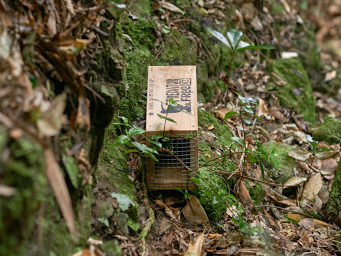We’ve pulled together some tips to make your trap more effective. The short version: know your rats, switch lures, move traps or get the neighbours involved.

1. Know your rat
To trap rats successfully, you need to know more about them, specifically their behaviours and what motivates them. Here are some interesting facts you should know about them:
Rats thrive around humans
Humans provide lots of food sources for rats, including compost bins, fruit and nut trees, pet food bowls, chicken coops and vegetable gardens. If your trap isn’t catching anything it might be because the rats in your backyard are spoilt for choice. This means it might be time to disrupt their food sources: store your food waste in a separate bin away from your existing compost bin for a few weeks, clean up pet food bowls at night and pick up fallen fruit and nuts from off the ground. This will force the rats to search for new foods like the lure in your trap.
Rats are naturally cautious
Rats are neophobic, meaning they are afraid of anything new and unfamiliar in their environment and this includes traps. If it’s been a few weeks and you’re aren’t having any luck with your trap, you might need to give it more time. Rats may avoid traps for some time until they feel familiar enough with them. Some people suggest pre-feeding your trap with your lure of choice so rats get a taste for it (more on this below).
Rats are food-driven
Rats are strongly driven by food and the smell of something they like to eat can make them less afraid of new things in their environment. Using an enticing lure is key to an effective rat trap but you might need to experiment. Like people, rats have individual food preferences so you might have to try a few to find the lure that works best.
We recommend using lures like peanut butter, Nutella, egg mayonnaise, cheese, walnuts, and/or milk chocolate to bait your trap. If you’re using a Victor or T-rex rat trap, you should refresh your lure every two weeks.
2. Pre-feeding
Pre-feeding is a great way to reduce a rat’s wariness toward your trap. Place a strong-smelling lure liberally at the entrance of the tunnel and in the area around the trap. To really step it up a notch, Connovation’s Lure-It spray comes in various rat-attracting flavours. Leave your trap unset, and once the rats are used to feeding near the trap, set it.
Pre-feeding also helps attract more rats to your trap. Rats are very social; when they meet, they touch noses and use their sense of smell to tell what the other has been eating. This helps them discover what food sources are in the area and could lead them to your trap.

3. Location, location, location

Position your trap so rats are likely to encounter it as they hunt or travel. Rats like to follow ‘runways’ near the cover of plants or buildings like along fence lines, hedges or walls.
Rats might not enter the tunnel if the exit is covered or blocked. Make sure to check that you can see right through the tunnel where you’ve placed it. Scuff in the dirt the entrance to your trap to create interest and attract rats.
If your trap has been in one place for a few weeks and it isn’t working, move it, or use chew cards around your property to find out where rats are.
4. The more, the merrier
If you started off with your trapping going well, but now you’re catching nothing, it might be time to get your neighbours on board. The rats may have caught on to the fact that your backyard is unsafe and have moved next door or down the block.
Get your neighbours involved so that the entire neighbourhood is protected from rats.
It might also be time to get another rat trap. Having more than one rat trap can help you cover multiple spots around your backyard.

